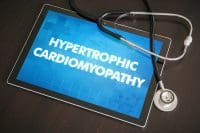As a healthcare workforce member, each nurse is part of a collaborative team of professionals caring for patients. According to Jensen (2015), “More than 250 healthcare professions exist” (p. 48). Each profession has a different scope of practice that contributes to the care of patients. All of these team members comprise a multidisciplinary team (MDT). Taberna et al. (2020) define the core function of an MDT as “bringing together a group of healthcare professionals from different fields to determine patients’ treatment plans” (p. 1). The benefits of a collaborative MDT include the removal of silos that different healthcare professions historically work within (Epstein, 2014). Removing these silos can allow effective collaboration to occur.
Enhancing healthcare collaboration is recognized as a critical strategy for healthcare improvement. The benefits of collaboration in healthcare have been shown to improve patient outcomes through the ability to reduce errors and provide expedited, coordinated care (Oandasan et al., 2006). Additionally, improved teamwork has also been shown to provide benefits to healthcare providers, including reducing extra work and increasing job satisfaction (Bosch & Mansell, 2015). For these reasons, the incorporation of strategies that help build a collaborative mindset should be considered within nursing education. Interprofessional education (IPE) is one technique that can help improve collaboration competencies such as teamwork, communication, and understanding of team members’ roles.
IPE is a technique whereby learners from several healthcare professions learn and work together (Thistlethwaite & Moran, 2010). IPE can positively impact teamwork in daily healthcare practice (Speakman, 2015) and is recommended for training programs for healthcare professionals (Wagner et al., 2011; Buring et al., 2009). Integrating IPE into nursing education pro-vides learners with a knowledge of the scope of practice and professional culture of other practitioners (Baker et al., 2010). Other benefits include developing techniques for effective teamwork and mutual respect (Hamilton, 2011) and navigating power differentials as required for collaborative decision-making (Robert Woods Johnson Foundation, 2015).
Providing simulated experiences for nurses that include other health disciplines is a learning strategy that can be used for conducting IPE (Alfes et al., 2018). Simulation creates a situation or environment to allow learners to experience a representation of an actual event for practice, learning, evaluation, testing, or to gain an understanding of skills or actions (Lioce et al., 2020). Simulations that include interprofessional education (Sim-IPE) allow learners to approach patient care collaboratively and develop skills for interprofessional practice and teamwork. Also, it can provide insight into the roles and responsibilities of the various disciplines within healthcare (Rossler et al., 2021).
Sim-IPE is quickly becoming the gold standard for increasing collaboration among the MDT (Foronda et al., 2016). Tiley and colleagues (2021) studied the impact of the use of Sim-IPE. Collaborative simulations that took place over two years between the New York University Rory Myers College of Nursing and Long Island University College of Pharmacy allowed students from each discipline to collaborate. The researchers used the Interprofessional Collaborative Attainment Survey to measure six collaboration domains before and after each simulation. The results indicated a significant improvement in scores across all six IPE competence domains, including communication, roles and responsibilities, collaborative patient/family-centered approach, conflict management, and team functioning, predicting that Sim-IPE can increase competencies related to collaboration (Tiley et al., 2021).
The American Nurses Association (ANA) recognizes the need for nurses to collaborate with other members of the MDT. Provision 8 of the ANA Code of Ethics (2015) states, “The nurse collaborates with other health professionals and the public to protect human rights, promote health diplomacy, and reduce health disparities” (p.5). As a result, nurse educators look to different techniques, such as Sim-IPE, to improve collaboration among the healthcare team. The results will lead to better teamwork, positive patient outcomes, and improved relationships within the healthcare team.
References:
Alfes, C. M., Rutherford-Hemming, T., Schroeder-Jenkinson, C. M., Lord, C. B., & Zimmermann, E. (2018). Promoting interprofessional collaborative practice through simulation. Nursing Education Perspectives, 39(5), 322–323. https://doi.org/10.1097/01.nep.0000000000000285
American Nurses Association. (2015). Code of ethics for nurses with interpretive statements. ANA.
Baker, L., Egan-Lee, E., Martimianakis, M. A., & Reeves, S. (2010). Relationships of power: Implications for interprofessional education. Journal of Interprofessional Care, 25(2), 98–104. https://doi.org/10.3109/13561820.2010.505350
Bosch, B., & Mansell, H. (2015). Interprofessional collaboration in Health Care. Canadian Pharmacists Journal / Revue Des Pharmaciens Du Canada, 148(4), 176–179. https://doi.org/10.1177/1715163515588106
Buring, S. M., Bhushan, A., Broeseker, A., Conway, S., Duncan-Hewitt, W., Hansen, L., & Westberg, S. (2009). Inter-professional Education: Definitions, student competencies, and guidelines for implementation. American Journal of Pharmaceutical Education, 73(4), 59. https://doi.org/10.5688/aj730459
Epstein, N. E. (2014). Multidisciplinary in-hospital teams improve patient outcomes: A Review. Surgical Neurology International, 5(8), 295–303. https://doi.org/10.4103/2152-7806.139612
Hamilton, J. (2011). Two birds with one stone: Addressing Interprofessional Education aims and objectives in health profession curricula through interdisciplinary cultural competency training. Medical Teacher, 33(4). https://doi.org/10.3109/0142159x.2011.557414
Jensen, C. B. (2015). The Continuum of Health Professions. Integrative Medicine, 14(3), 48–53.
Lioce, L., Lopreiato, J., Downing, D., Chang, P. T., Robertson, j M., Anderson, M., Diaz, D. A., & Spain, A. e. (2020, September). Healthcare Simulation Dictionary –Second Edition. The Society for Simulation in Healthcare. Retrieved from https://www.ssih.org/Dictionary
Oandasan, I., Baker, G. R., & Barker, K. (2006). Teamwork in health care: promoting effective teamwork in healthcare in Canada: policy synthesis and recommendations. Canadian Health Services Research Foundation
Robert Woods Johnson Foundation. (2015). Lessons from the field. RWJF. https://www.rwjf.org/en/insights/our-research/2015/03/lessons-from-the-field.html
Rossler, K., Molloy, M. A., Pastva, A. M., Brown, M., & Xavier, N. (2021). Healthcare simulation standards of best PRACTICETM simulation-enhanced Interprofessional Education. Clinical Simulation in Nursing, pp. 58, 49–53. https://doi.org/10.1016/j.ecns.2021.08.015
Speakman, E. (2015). Interprofessional and collaborative practice in clinical settings. Clinical Teaching Strategies in Nursing, pp. 63, 35–37. https://doi.org/10.1891/9780826140036.0013
Taberna, M., Gil Moncayo, F., Jané-Salas, E., Antonio, M., Arribas, L., Vilajosana, E., Peralvez Torres, E., & Mesía, R. (2020). The multidisciplinary team (MDT) approach and quality of care. Frontiers in Oncology, 10, 1–16. https://doi.org/10.3389/fonc.2020.00085
Thistlethwaite, J., & Moran, M. (2010). Learning outcomes for interprofessional education (IPE): Literature review and synthesis. Journal of Interprofessional Care, 24(5), 503–513. https://doi.org/10.3109/13561820.2010.483366
Tilley, C. P., Roitman, J., Zafra, K. P., & Brennan, M. (2021). Real-time, simulation-enhanced interprofessional education in the care of older adults with multiple chronic comorbidities: A utilization-focused evaluation. mHealth, pp. 7, 3–3. https://doi.org/10.21037/mhealth-2019-rdm-06
Wagner, J., Liston, B., & Miller, J. (2011). Developing interprofessional communication skills. Teaching and Learning in Nursing, 6(3), 97–101. https://doi.org/10.1016/j.teln.2010.12.003































